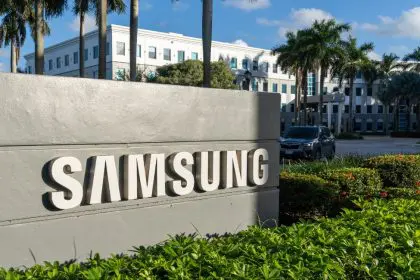Amazon has found that its “demand” for AI is like never before. The company has positioned itself at the forefront of the rapidly evolving artificial intelligence landscape, recognizing the transformative potential this technology holds.
The tech giant is trying to utilize the innovation of artificial intelligence and explained that more needs to be done as it grows into the future. As global markets continue to embrace AI solutions, Amazon’s strategic focus represents a significant shift in how major corporations are approaching technological development.
“The demand is unlike anything we’ve seen before, and our customers, shareholders, and business will be well-served by our investing aggressively now,” he said in a letter to staff. This bold statement underscores the company’s commitment to maintaining competitive advantage in an increasingly AI-driven marketplace.
“The faster demand grows, the more data centers, chips and hardware we need to procure (and AI chips are much more expensive than CPU chips.” This acknowledgment of the substantial cost differential between traditional computing components and specialized AI hardware highlights the financial commitment required to build robust AI infrastructure.
He also detailed that recent spending for AI was “upfront” and promised that its uses will be felt “for many years” to come. The long-term vision suggests Amazon views these investments not as temporary expenditures but as foundational elements of its future business strategy across multiple sectors.
Jassy added that things will get “more efficient” in the next few years as the model improves. This expectation of increased efficiency aligns with the historical pattern of technological evolution, where initial implementations typically improve dramatically as the technology matures.
“Inference will also get meaningfully more efficient in the next couple of years with improvements in model distillation, prompt caching, computing infrastructure, and model architectures,” he said. These technical improvements represent the next frontier in AI development, potentially addressing current limitations in processing power and energy consumption.
Amazon‘s aggressive AI strategy comes at a time when businesses across virtually every industry are exploring how artificial intelligence can transform their operations. The company’s scale and resources position it uniquely to capitalize on these emerging opportunities while setting standards for implementation.
The expansion of Amazon’s AI capabilities will likely impact its vast ecosystem of services, from cloud computing through AWS to consumer-facing applications like Alexa. These integrated applications demonstrate how AI can enhance existing offerings while enabling entirely new categories of products and services.
Industry observers note that Amazon’s focus on AI infrastructure development represents a significant bet on the future direction of technology. By establishing robust foundations now, the company aims to secure advantages that may be difficult for competitors to overcome in the coming years.
The company’s approach to AI development also includes consideration of talent development and recruitment. As demand for AI expertise continues to outpace supply in the global job market, Amazon’s investments may include significant resources dedicated to building internal capabilities.
Shareholders are watching these developments closely, as the substantial investments represent both opportunities and risks. The long-term payoff of AI integration could dramatically reshape Amazon’s growth trajectory, but requires patience during the initial investment phase.
Amazon’s data center expansion plans will likely accelerate to accommodate the increased computational demands of advanced AI systems. These facilities represent the physical infrastructure that will power the next generation of intelligent services across the company’s diverse business units.
The letter’s emphasis on efficiency improvements suggests that Amazon recognizes the current limitations of AI technology and is planning for a future where these constraints are progressively overcome. This realistic assessment demonstrates the company’s sophisticated understanding of AI’s current capabilities and future potential.
As Amazon continues its AI journey, the implications extend beyond the company itself to its vast network of partners, suppliers, and customers. The ripple effects of these investments could reshape supply chains, alter consumer expectations, and establish new standards for how businesses leverage artificial intelligence.
The company’s commitment to AI represents a watershed moment in how major corporations approach technological innovation. Rather than viewing AI as merely an incremental improvement to existing systems, Amazon appears to recognize it as a fundamental shift that will redefine the nature of business in the digital age.
















